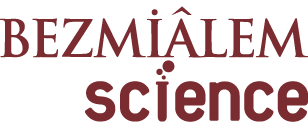ÖZET
Amaç:
Araştırma, cerrahi ekip üyelerinin Güvenli Cerrahi Kontrol Listesi’nin (GCKL) kullanımı sırasında karşılaştığı ramak kala olayları incelemek amacıyla tanımlayıcı olarak yapılmıştır.
Yöntemler:
Araştırmanın katılımcılarını, 25 Haziran 2018-07 Eylül 2018 tarihleri arasında Ankara ilinde bulunan üç kamu hastanesinin, cerrahi servisleri (n=94) ve ameliyathanede çalışan (n=293) cerrahi ekip üyeleri (anestezi uzmanı, hemşire, cerrah, cerrahi teknisyen, anestezi teknikeri) oluşturmuştur (n=387). Veriler Bireysel Bilgi Formu ve GCKL Uygulama Formu ile elde edilmiştir. Veriler değerlendirilirken ki-kare testi ve Mann-Whitney U testi kullanılmıştır (p<0,05).
Bulgular:
Araştırma sonucunda, cerrahi servis ve ameliyathanelerde çalışan cerrahi ekip üyelerinin %27,1’i GCKL ile ilgili eğitim almadığı belirlenmiştir. Cerrahi ekip üyelerinin %72,9’unun GCKL ile ilgili eğitim aldığı, %37,0’ının ise GCKL’nin kullanımı sırasında bu uygulamanın önlediği ramak kala olaylar ve tıbbi hatalar olduğunu ifade ettiği bulunmuştur. Ramak kala olayı %90,2’sinin bilmesine ve karşılaşanların oranın %37,0 olmasına karşın, olay bildirimi yapanların oranı %7,8 olarak saptanmıştır. Araştırmaya katılanların en çok karşılaştığı ramak kala olaylar %26 ile taraf işaretlemenin olmaması, %23 ile takıların çıkarılmaması, %18 ile hastanın tok gelmesi olarak saptanmıştır. Ayrıca tıbbi hata oluşum nedeni olarak %26,2 oranında dikkatsizlik, %10,1 oranında yoğunluk ve %14,8 oranında bilgi eksikliği bildirilmiştir.
Sonuç:
Araştırma sonucunda, cerrahi ekip üyelerinin, özellikle kullanım oranı yüksek olan hemşirelerin GCKL’yi kullanımı sırasında ramak kala olaylar ile karşılaştığı belirlenmiştir. Önlenebilir tıbbi hataların erken saptanması bu hataların oluşumunu engelleyecektir. Konu ile ilgili eğitimlerin artırılması ve cerrahi ekip üyelerine olumlu geri bildirimler yapılması GCKL formunun daha çok kullanımını ve olay bildirimlerinin artmasını sağlayacaktır.



